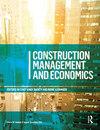Exploring the connection between emotions, artefacts and institutional work: the case of institutional change for public facilities management
IF 3
Q2 BUSINESS
引用次数: 1
Abstract
Abstract Public facilities management (PFM) is currently moving from being an institution driven by ad-hoc practices to now introducing long-term and strategic practices. During this institutional change, human actors engage in institutional work to create new practices. However, old practices seem to be maintained within PFM to a large extend. Why? Data were collected through case studies in two public facilities management organizations, an interview study in eight organizations from the institution of PFM and a workshop with representatives from the institutional field of PFM. Findings show how the changing institutional setting for the institution of PFM produce negative emotions. To manage these, human actors engage in institutional work and here they employ artefacts as means to drive change. These artefacts functioned in various ways to reduce negative feelings by inducing a sense of safety (as soft blankets), by enabling the avoidance of dealing with ‘the truth’ (as shields) and by offering hope (as a vision of perfect future). Thereby, they did not take part in creating change, as much as they took part in maintaining current practices. The unintended consequences of the usage of artefacts, explain why practices are maintained during institutional change for PFM.探索情感、人工制品和制度工作之间的联系:公共设施管理的制度变革案例
摘要公共设施管理(PFM)目前正从一个由临时实践驱动的机构转变为引入长期和战略性实践。在这一制度变革过程中,人类行动者参与制度工作,创造新的实践。然而,旧的实践似乎在很大程度上被保留在PFM中。为什么?数据是通过对两个公共设施管理组织的案例研究、对PFM机构的八个组织的访谈研究以及与PFM机构领域代表的研讨会收集的。研究结果表明,PFM制度的制度环境变化如何产生负面情绪。为了管理这些,人类行动者参与机构工作,在这里他们使用人工制品作为推动变革的手段。这些人工制品以各种方式通过诱导安全感(作为柔软的毯子)、避免处理“真相”(作为盾牌)和提供希望(作为完美未来的愿景)来减少负面情绪。因此,他们没有参与创造变革,而是参与维持当前的做法。使用人工制品的意外后果,解释了为什么在PFM的制度变革期间保持实践。
本文章由计算机程序翻译,如有差异,请以英文原文为准。
求助全文
约1分钟内获得全文
求助全文
来源期刊

Construction Management and Economics
BUSINESS-
CiteScore
7.50
自引率
14.70%
发文量
58
期刊介绍:
Construction Management and Economics publishes high-quality original research concerning the management and economics of activity in the construction industry. Our concern is the production of the built environment. We seek to extend the concept of construction beyond on-site production to include a wide range of value-adding activities and involving coalitions of multiple actors, including clients and users, that evolve over time. We embrace the entire range of construction services provided by the architecture/engineering/construction sector, including design, procurement and through-life management. We welcome papers that demonstrate how the range of diverse academic and professional disciplines enable robust and novel theoretical, methodological and/or empirical insights into the world of construction. Ultimately, our aim is to inform and advance academic debates in the various disciplines that converge on the construction sector as a topic of research. While we expect papers to have strong theoretical positioning, we also seek contributions that offer critical, reflexive accounts on practice. Construction Management & Economics now publishes the following article types: -Research Papers -Notes - offering a comment on a previously published paper or report a new idea, empirical finding or approach. -Book Reviews -Letters - terse, scholarly comments on any aspect of interest to our readership. Commentaries -Obituaries - welcome in relation to significant figures in our field.
 求助内容:
求助内容: 应助结果提醒方式:
应助结果提醒方式:


